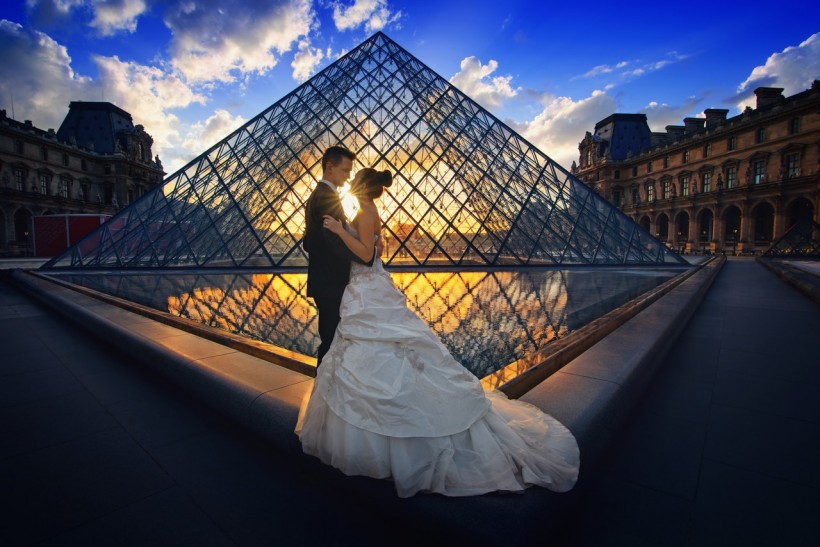Once the "I do's" have been said and the last of the confetti has been thrown, many a newlywed bride and groom areleft reeling in the aftermath of the biggest day of their lives. It is, after all, the culmination of months (or years) of arduousplanning and often a hefty financial investment, and it's over in just one short day. Even though the day goes by quickly,it's packed with events, interactions, and physical exertion (hello, hours on the dance floor!) that leaves even the mostwell organized and cool-headed couples exhausted.
Many couples express feeling a major emotional decline after their wedding day ends-having revolved their livesanticipating this one event for so long can leave a hole where there was once something to look forward to.
But fear not, intended couples! There is still one additional thing you have to look forward to after your wedding day (andit's definitely not the mountain of thank you cards to fill out or final invoices to pay, though those are waiting for youpost-nuptials, too). It's the arrival of your wedding photo gallery! These photos are the long-term memorialization of yourplanning success and will transport you back to that day for as long as you live.
The hardest part is remaining patient while waiting for your wedding photos to be delivered-and the waiting can feel likeit goes on forever. Why does it take so long to receive your photos? What happens to them after your wedding day?Read on to remove the mystery and explore the science behind your wedding photos.
Culling
According to Sussex Wedding Photographer, once the raw images from your wedding are uploaded to a computer andget backed up for safekeeping, they first go through a process called culling. This essentially means that yourphotographer goes through the hundreds of photos that were taken on your wedding day and removes any of the"duds": photos where subjects' eyes are closed, mouths are hanging open, or just generally unflattering photos thatcan't be fixed in editing.
Hearing that some of the photos get deleted is sometimes shocking to a bride or groom, but rest assured that these arephotos you truly don't want. Most people don't consider that standard coverage of a wedding day often ends with aphotographer leaving the venue with between 1,500 to 3,500 raw images on their memory drives. A percentage ofthose photos aren't the epic, polished documentations of your event that you expect to see in your final gallery; they'rethe moments before, after, or in-between, when you're preparing to speak, stopped smiling, or are looking the wrong way. There are better versions of the same moments that you will get to cherish for many years to come, so there's noneed to hang on to the bad ones.
Editing
The next step in processing your wedding photos for delivery is editing. Editing can include adjusting the lighting andtones of each individual image, as well as cropping and retouching the image to highlight the best features. Eachphotographer's signature editing style is different. Some prefer more contrast, some prefer a cooler temperature, somelike increased saturation or exposure, and some even specialize in black & white editing.
This is often the most time-consuming part of the process. Even after culling the gallery, there are still several hundredimages to be edited by hand in a painstaking process, but the end result is well worth it.
This is one of the main reasons why your photographer quotes multiple weeks between execution of the event and thedelivery of your photos-the process is long, hard work but you're left with a gallery of high-quality, individually editedimages you'll never tire of seeing.
Gallery & Album Design
After culling and editing your photos, they're ready for uploading to your gallery! Your gallery can be delivered to you inany number of ways, like on a CD, flash drive, or virtual gallery of digital images. Depending on the level ofcommunication and trust you have with your photographer, you may also opt to have some of your images delivered inprint, though most brides and grooms prefer to choose which images they want printed themselves.
Some photographers offer a physical photo album as part of your wedding package, in addition to your digital imagesand/or prints. If you choose to add this service, your photographer will likely design the layout and select the images foruse, and this can happen before or after you get the final images.
When should I contact my photographer about receiving my wedding photos?
This is a tricky question. Your wedding photographer most likely will give you an approximate timeline before or afteryour wedding to let you know when to expect your images-it's likely included in your contract.
If you have questions about when to expect your wedding photos, refer to your contract or previous communications first to see if you can find the answer yourself. While it may seem like a quick and harmless question, if yourphotographer had to answer the same question several times a day for each excited couple expecting photos, they'dlikely never get the time to actually edit the photos! If you can find a reference for the expected timeframe, wait it out. Ifthere are any delays or setbacks that will delay the timeline, your photographer will contact you to let you know.
If, however, the quoted deadline has passed and you haven't heard a peep from your photographer, it's okay to send acourteous check-in email. Otherwise, you're now aware of the lengthy process they go through to get your stunningphotos back to you, so it may be easier to find patience.
* This is a contributed article and this content does not necessarily represent the views of sciencetimes.com















